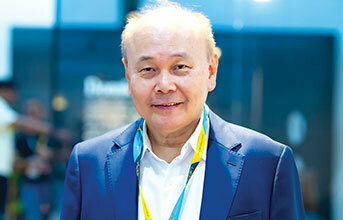
Tell us in detail about your journey so far. What kind of response you have received from the market over the years for HTL Group?
From being the largest sofa producer to the top leather upholstery specialist in the world, our journey has been remarkable and rewarding, and one that we will cherish. Beginning from the creation of a single sofa to establishing an entire business dedicated to crafting sofas, we have pursued our passion.
Over the years, we have expanded HTL's footprint to 53 countries and is ambitious to propel further.
The market for sofas and furniture has undergone a tremendous change as individuals have grown increasingly concerned with the interior design of their homes and the use of premium quality furnishings. HTL has built its reputation over the years on its commitment to quality, comfort, affordability, and customer service.
Give us an overview of your business performance and growth in 2022. What is your outlook for 2023?
Our business has been prospering and is highly favourable. HTL has shown a growth of 25 per cent overall in 2022. Looking ahead to 2023, we hold a positive and promising outlook, especially with our entry in the Indian market. The Indian market has shown significant expansion with respect to furniture and sofas. HTL setting up its manufacturing facility and providing services in India will significantly benefit our retail partners and enable us to cater to the Indian audience with the best quality and service.
What are the key trends shaping the furniture manufacturing segment?
The prevailing trend in the industry is tilting towards motion sofas. The market share for motion sofas has experienced proportional growth, leading customers to divert their attention from conventional furniture. The customer preference is now shifting towards contemporary motion sofa designs and models, as they have created a buzz within the furniture industry.
We are incorporating more advanced technology into our furniture production. The company is also emphasising on the strategy of nearshoring, which entails relocating production sources closer to the market, which subsequently improves the supply chain resilience and risk management.
What sets HTL's manufacturing plants in India apart from the international ones?
HTL has acquired German and Italian brands and aims to take the furniture sector to a notch higher. Fortunately, brands under HTL have received a fabulous response from the Furniture retail fraternity, with many partners adopting the Shop in Shop concept. They share HTL's ideology of prioritising quality, comfort and customer service.
Regardless of the country of operation, we are committed to maintaining consistent and high standards of quality. Our well-maintained manufacturing facilities in India facilitate prompt client service with a vertically integrated manufacturing unit. Additionally, we have begun exporting products manufactured in India, which is in line with our commitment to the "Make in India" initiative.
Apart from leather, what are the other upholstery fabric options offered by HTL?
While it is true that leather remains significant to us, we have also introduced a new line of fabrics that have received an overwhelming response from our retail partners.
As part of our commitment to the environment and future generations, we have incorporated ecofriendly materials into our fabric selection. These materials are manufactured from recycled plastic bottles, with approximately 50 per cent comprising of leather, while the remaining 50 per cent consists of fabric. In the high-end market, leather is still very popular as Nature's fabric.
We continuously innovate our fabric range to meet customer needs. This includes introducing resilient fabrics that are easy to maintain, clean and pet friendly. Moreover, we offer eco-friendly fabrics crafted from recycled PET materials, as well as heavy weight cushioned fabrics. For customers who desire the appearance of leather but prefer alternative options based on their lifestyle or personal preferences, we have seen considerable success in selling leather-like fabrics.
Tell us in detail about your company's sustainability & ESG initiatives? How is it helping in reducing your carbon footprint and achieving NetZero target?
One of our biggest initiatives is reducing shipping costs by moving our production to India. Further, we are dedicated to sustainable packaging as our packaging consists of 100 per cent recyclable materials and is boxed in cartons. We ensure that the origin of all our leather hides can be linked to farms. Our tanneries feature water treatment plants, which cleans the water before it is released into the environment. These tanneries hold an ISO 4001 accreditation, showing our commitment to environmental management.
What is the capacity of your manufacturing plants in India? Are there any plans for further expansion and growth this year?
Currently, our Chennai and Pune facilities, are the two plants we have in India, with each enclosing a 5-lakh square ft. space. As we continue to expand, we aim to achieve 1,200 containers every month.
How are the new-age technologies being adopted in the manufacturing sector?
Upholstery manufacturing is known for its skilled craftsmanship. To enhance worker productivity and cost efficiency, our primary focus lies on automation. Consequently, our workforce can redirect their efforts towards higher-value tasks such as quality assurance, design, and customer service.
With Industry 4.0 taking over, how drastically it will change manufacturing operations in India?
The only thing that remains constant is change. There have been many changes in the industry, but stability remains a key aspect.
We have concentrated on the intensified use of robotics and automation to optimise our production process. With the integration of new digital technologies, we aim to accelerate the creation of new products and reduce the time to market.
Additionally, the utilisation of data analytics and focused augmented reality plays a pivotal role to optimise supply chain efficiencies and accelerate conversion the process. Overall, it will involve making smarter choices to enhance business models, create greater value, and improve the customer experience.


























